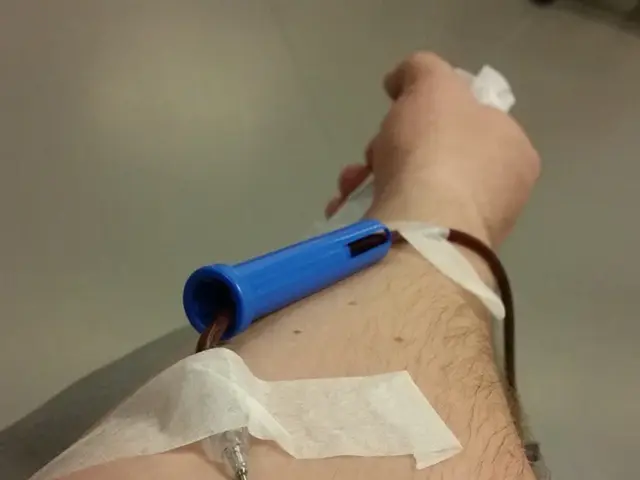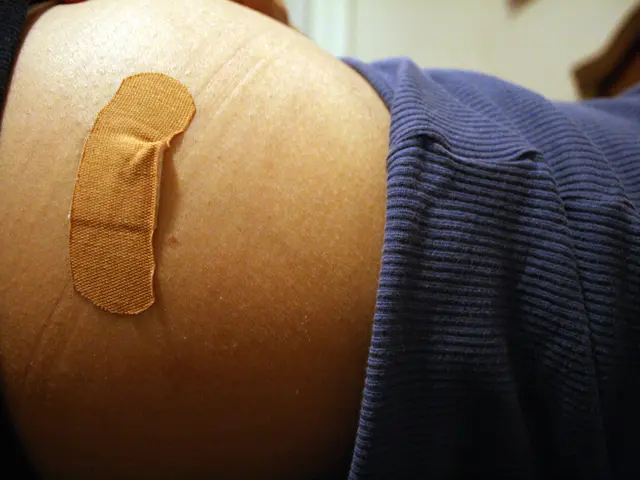Discovering Gua Sha Massage: The Unspoken Jewel in Alternative Therapies
Scrape Away Stress with Gua Sha Massage: A Practical Guide
Gua sha, an ancient Chinese healing technique, is making a comeback! But does this quirky massage method really work? Let's dive in and discover the ins and outs of gua sha massage.
What is gua sha massage?
In traditional Chinese medicine (TCM), gua sha (pronounced gwah-shaw) massage is a practice consisting of rolling or scraping a smooth stone or tool over the skin. You may have heard it called "spooning," "coining," or "scraping." This technique may offer potential health benefits such as reducing inflammation and aiding in chronic pain relief. However, research on gua sha is limited, and it's not suitable for everyone.
Techniques and Effects
Gua sha practitioners believe that chi (life force or energy) can become blocked in the body, leading to issues like inflammation, chronic pain, and disease. By using a tool to scrape the skin in a downward motion, they aim to free up the stagnant energy, boost circulation, and improve blood flow.
A common gua sha tool is a smooth-edged, almost heart-shaped stone, typically made from jade or amethyst. Massage oil can be applied for a smoother experience. The massage is typically performed on the back, butt, neck, arms, or legs. A gentler version is sometimes used on the face.
Does It Hurt?
Like cupping therapy, some gua sha sessions may be forceful enough to leave behind red marks or bruises. Your therapist should work with you to understand your comfort level. For a more relaxed experience, simply inform them of your preferences and boundaries.
Tools for Gua Sha Facial Massage
Normally used for spiritual-wellness purposes, gua sha stones were once highly valued in ancient healing practices. TCM practitioners believe that certain natural materials contain an energy that facilitates healing. Jade is ideal due to its energy and balancing properties. Other popular stones include Bian stone, rose quartz, amethyst, and aventurine. Medical-grade stainless steel and traditional spoons or coins can also be used.
Benefits of Gua Sha Massage
While there isn't a lot of scientific research supporting gua sha, it might promote blood circulation and reduce inflammation, providing potential relief for various ailments like fibromyalgia, arthritis, and back pain. Keep in mind that even if placebo effects play a role, they may be enough to benefit you.
Here are some gua sha benefits based on existing research:
- Reduces inflammation: Like other types of massage, gua sha may promote blood circulation and reduce inflammation, possibly treating chronic pain and disease.
- Combat symptoms of Hepatitis B: A single case study suggested that a Hepatitis B patient experienced liver inflammation reduction after gua sha massage. However, more research is needed.
- Ease headaches: In a case study, a woman with chronic headaches showed improvement after receiving gua sha massages. More studies are necessary to confirm gua sha's effectiveness for headaches.
- Aid in muscle recovery: A study on weightlifters suggested that gua sha might speed muscle recovery, potentially serving as an alternative to certain sports training recovery methods.
- Reduce pain: Gua sha may help improve range of motion and reduce neck and shoulder pain in computer users and those with neck pain.
- Soothe breast engorgement: A case study showed that gua sha might help ease breast engorgement in breastfeeding individuals. This is based on just one person, though, so these results should be taken with a grain of salt.
- Ease perimenopausal symptoms: In a study of 80 women with perimenopause, gua sha therapy significantly reduced symptoms compared to traditional therapy.
Risks and Side Effects
While gua sha massage is generally safe, it can cause minor bruising or redness. Make sure you discuss the pressure level you're comfortable with before your session. Gua sha can potentially lead to bleeding, infection, and further complications if you're taking blood thinners or have a clotting disorder or have had surgery recently. Always seek out a licensed acupuncturist or traditional Chinese medicine practitioner to minimize these risks.
- Gua sha, a practice from traditional Chinese medicine, involves scraping a smooth stone or tool over the skin, aiming to boost circulation and improve blood flow.
- The belief in gua sha is that chi, or life force or energy, can become blocked in the body, leading to issues, and that this technique can free up the stagnant energy.
- This alternative medicine method might offer potential health benefits such as reducing inflammation, aiding in chronic pain relief, and promoting skin care.
- Jade is an ideal stone for gua sha due to its energy and balancing properties, and is often used for facial massage.
- Despite limited research, gua sha massage might provide relief for various ailments like fibromyalgia, arthritis, back pain, headaches, muscle recovery, neck and shoulder pain, breast engorgement, and perimenopausal symptoms.
- Gua sha can cause minor side effects like bruising or redness, and it's recommended to discuss the pressure level with the practitioner before the session.
- Be aware that gua sha may cause bleeding, infection, or further complications if you're taking blood thinners, have a clotting disorder, or have recently had surgery, so seek out a licensed acupuncturist or traditional Chinese medicine practitioner to minimize these risks.








